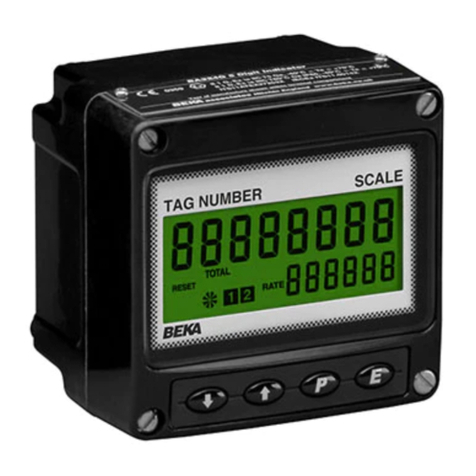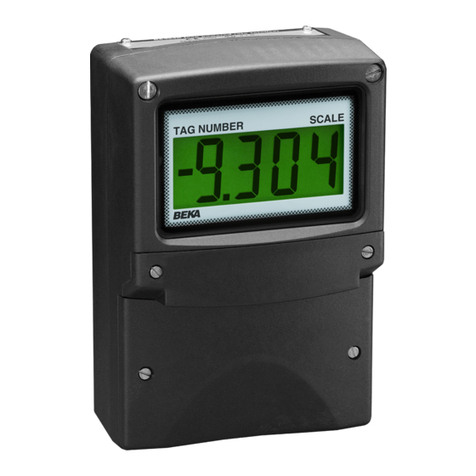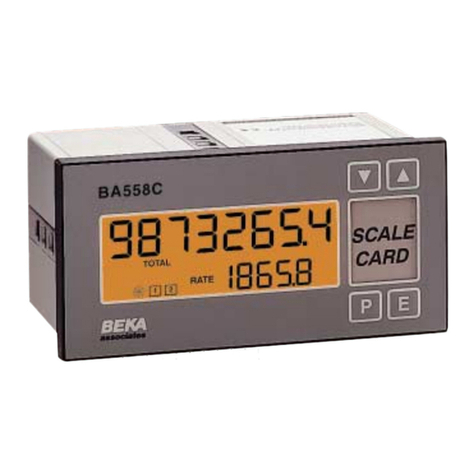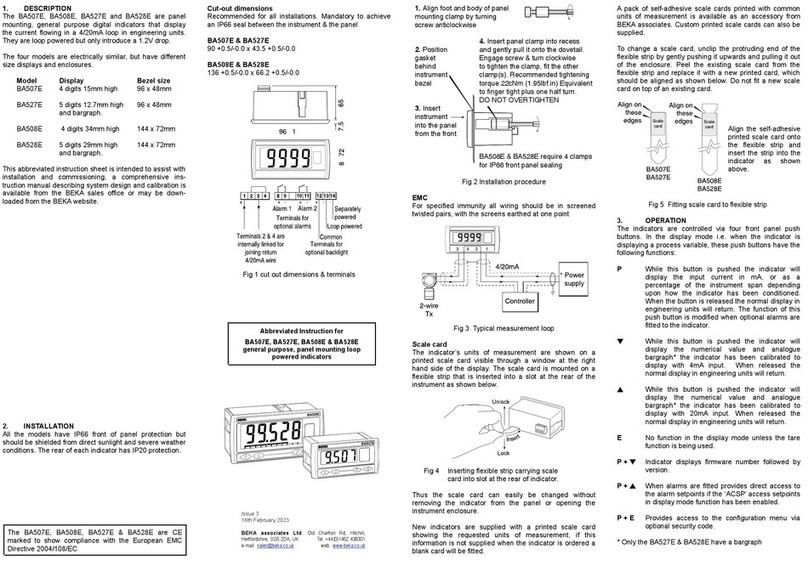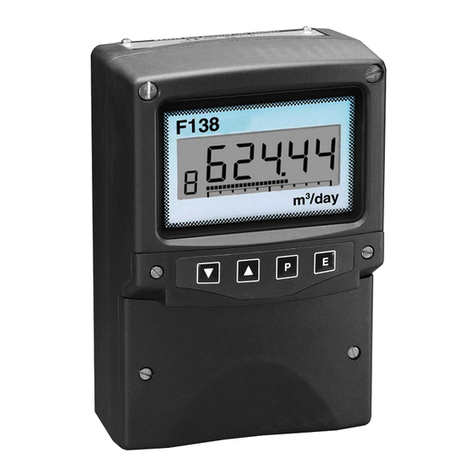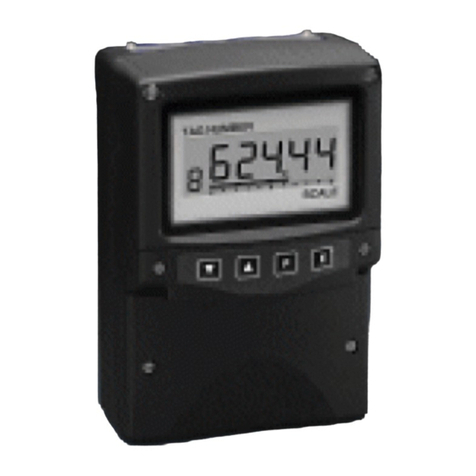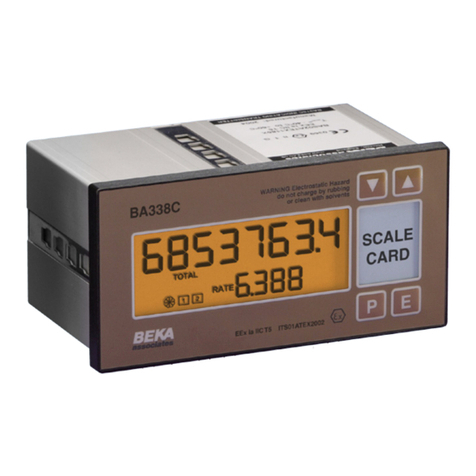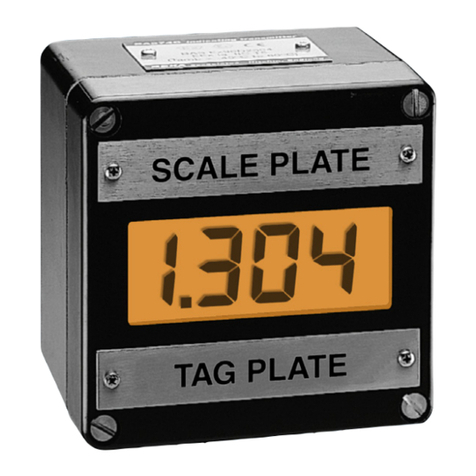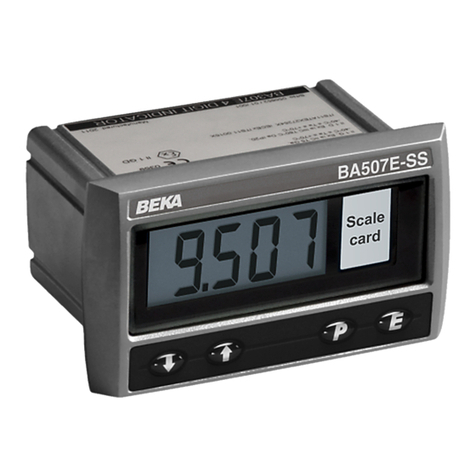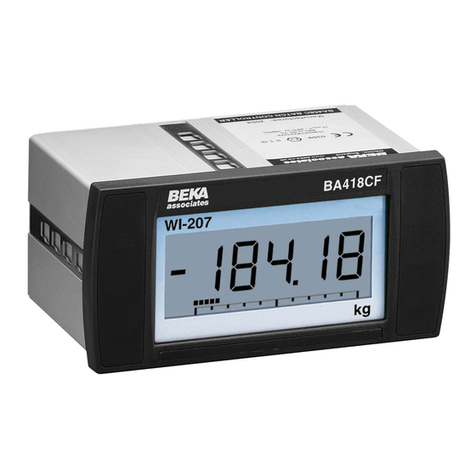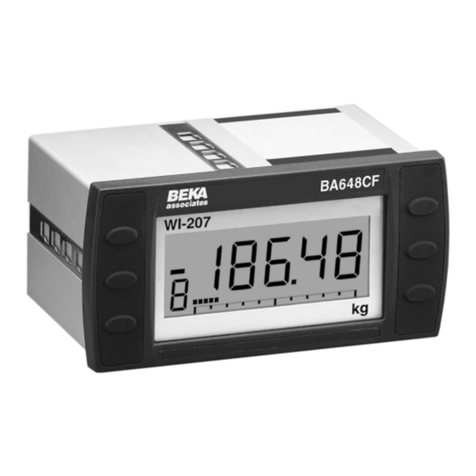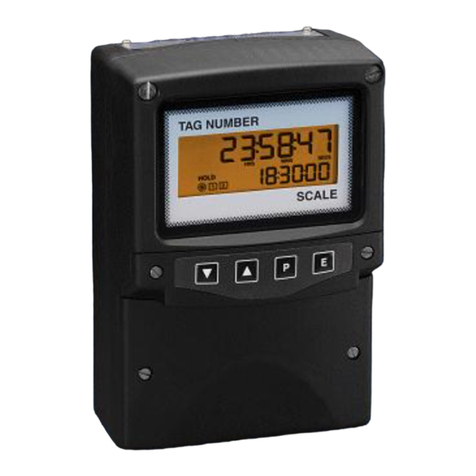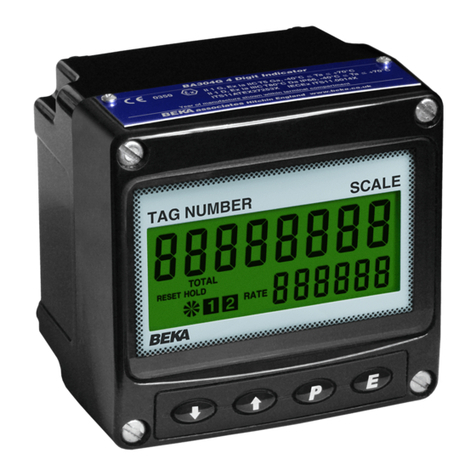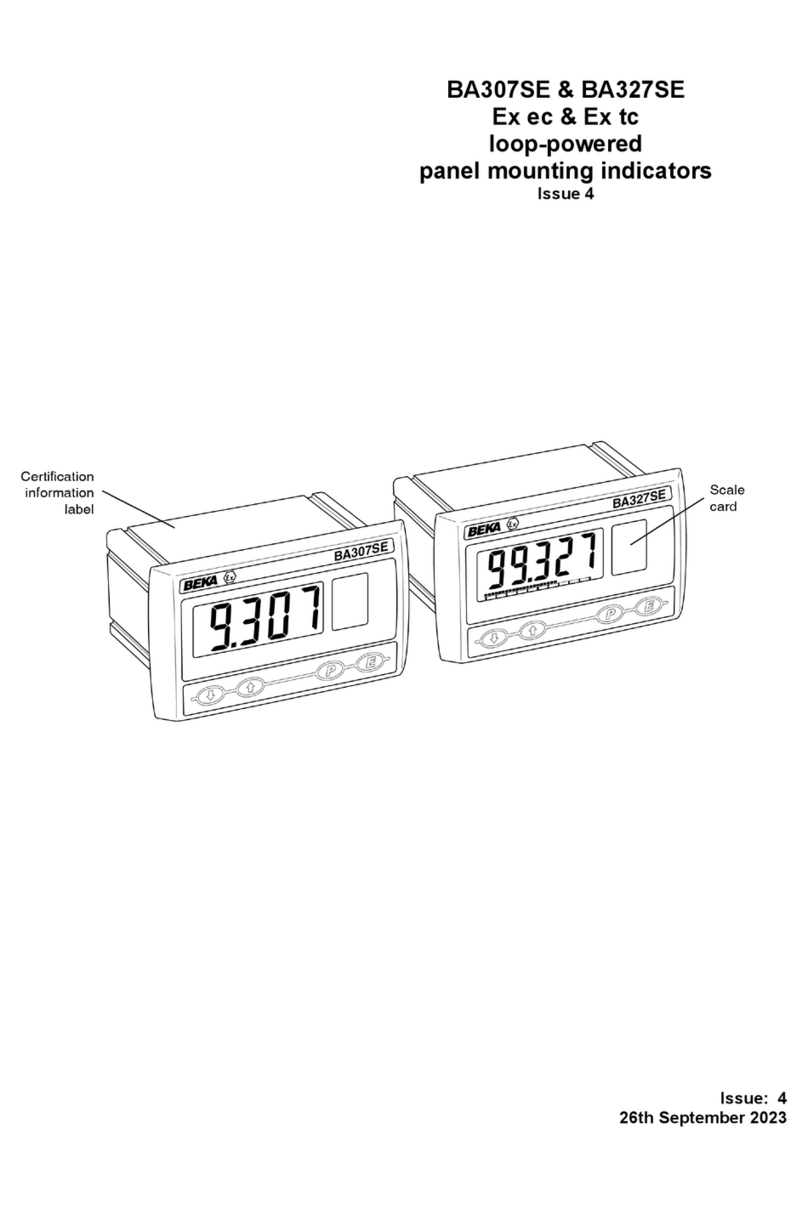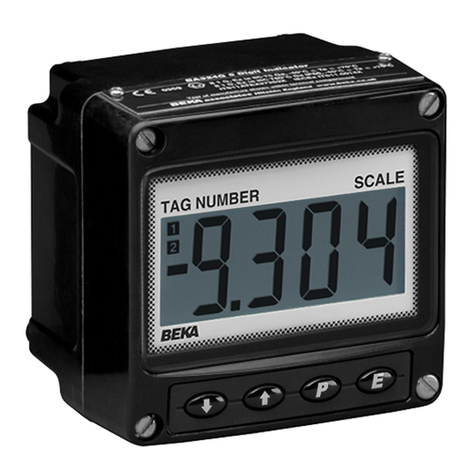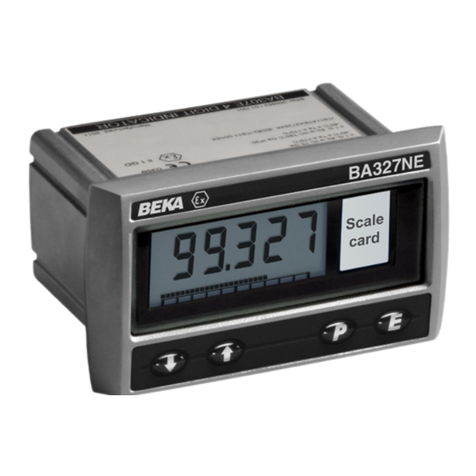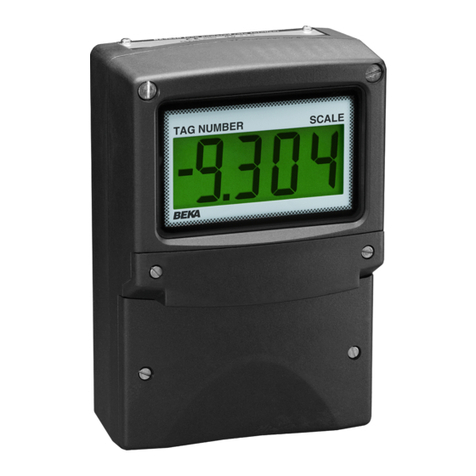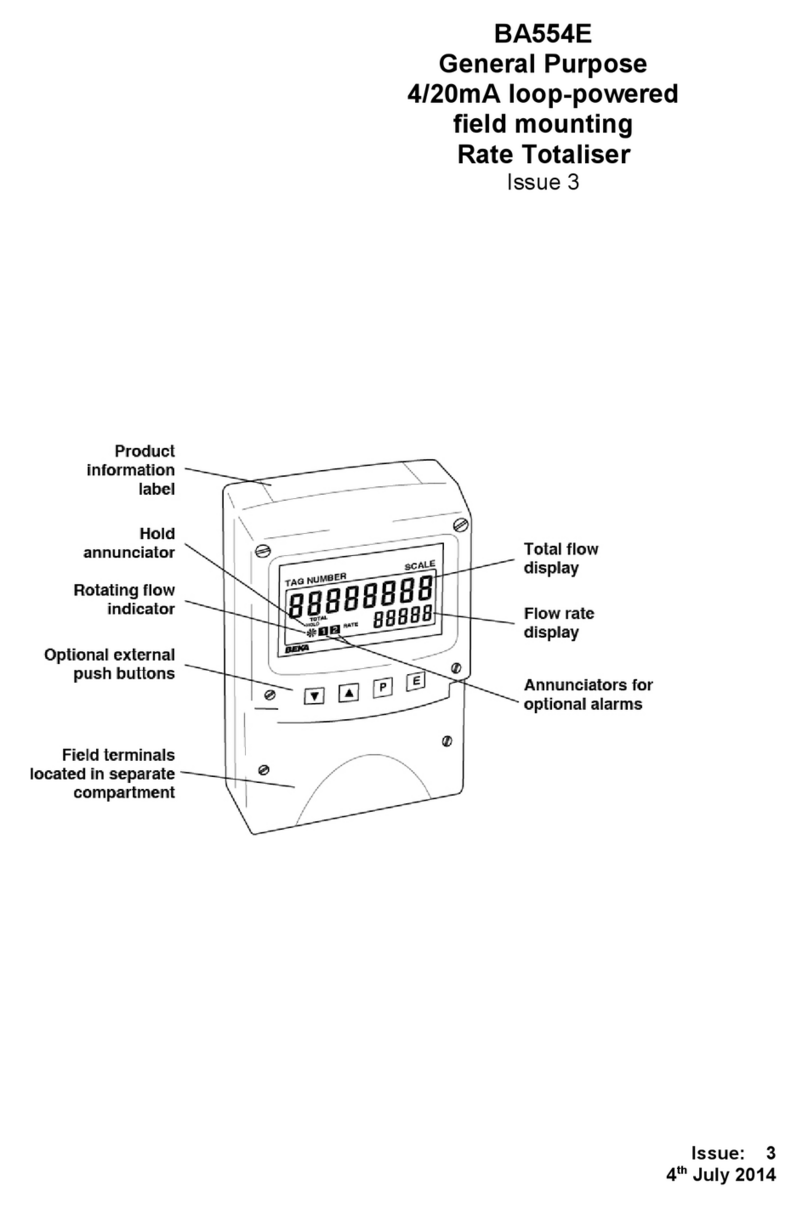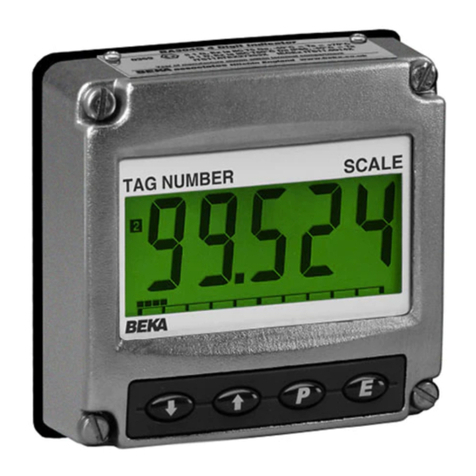
3
1. DESCRIPTION
The BA488CF-P PROFIBUS Display is an
intrinsically safe instrument that can display up to
eight fieldbus process variables, together with their
units of measurement and tag information. The
instrument is bus powered so no additional power
supply is required.
Order Communication Function
Code Protocol Blocks
BA488CF-P PROFIBUS PA Eight Analogue
outputs (8 x AO)
Six Digital inputs
(6 x DI)
The instrument’s communications protocol is
shown on the rear panel. The ‘-P’ order code
suffix also indicates the protocol but is not shown
on the instrument certification label. There is an
alternative version of the fieldbus display, order
code BA488CF-F for use on FOUNDATION™
fieldbus systems.
Configuration may be performed by either a DPV 0
user PRM data download, or by a DPV 1
configurator and if required the instrument address
may be entered via the instrument’s front panel
push buttons. The required GSD files are available
for downloading from both the PROFIBUS and
BEKA websites.
Eleven selectable standard display formats enable
one, two, three, four or eight process variables,
some with bargraphs to be displayed
simultaneously on one screen.
The six front panel push buttons that control the
instrument display may also be used for returning
operator acknowledgements, thus enabling the
BA488CF-P PROFIBUS display to function as a
simple operator interface. If larger industrial push
buttons are required for entering these
acknowledgements, up to six external switches
may be connected to the BA488CF-P. These
switch inputs may also be used for returning the
status of plant contacts to the host using the DI
function blocks.
The BA488CF-P PROFIBUS Display can be
supplied with six optional alarm outputs that may
be linked to any of the displayed fieldbus variables.
These alarm outputs are locally activated from the
fieldbus variable and are configured via the
instrument menus and push buttons. They can not
be controlled via the fieldbus.
The instrument has been certified intrinsically safe
by European Notified Body Intertek Testing
Services (ITS) to the ATEX Directive 94/9/EC for
use in explosive gas atmospheres.
For use in the USA the instrument has intrinsic
safety and nonincendive FM Approval – see
Appendix 2, plus IECEx intrinsic safety approval
for international applications – see Appendix 3.
Housed in a robust 72 x 144 panel mounting DIN
enclosure, the BA488CF-P PROFIBUS display has
an IP66 front panel and is supplied with a gasket to
seal the joint between the instrument and the
panel.
1.1 Documentation
This instruction manual describes system design,
conditioning and installation of the BA488CF-P
PROFIBUS display. For detailed commissioning
information please refer to the PROFIBUS
Interface Guide that can be downloaded from the
BEKA website www.beka.co.uk
1.2 Version 3.0 firmware
This manual describes BA488CF-P PROFIBUS
displays employing version 3.0 firmware that was
released in July 2010 and is not backwards
compatible with earlier versions.
Version 3.0 firmware provides
Addition of (6 x DI) function blocks to return
switch status to host.
Fieldbus address entry via instrument push
buttons.
Addition of DPV 0 configuration
Addition of two standard screens allowing
eight fieldbus variables to be simultaneously
displayed.
Removal of text display facilities
When using the ▼or ▲button to select
input, or groups of inputs to be displayed,
unused inputs can now be skipped.
The instrument’s firmware version can be
established using the ‘Unit Info’ function in the
main configuration menu – see section 6.3.9 of this
manual. Version 3.0 firmware is shown as
SW480F-02-300.
For BA488CF-P PROFIBUS displays employing
version 2.0 firmware, please refer to the BA488CF
Intrinsically safe field mounting fieldbus display
Issue 10 manual dated 3rd November 2009 which
may be downloaded from the obsolete products
section of the BEKA website.

